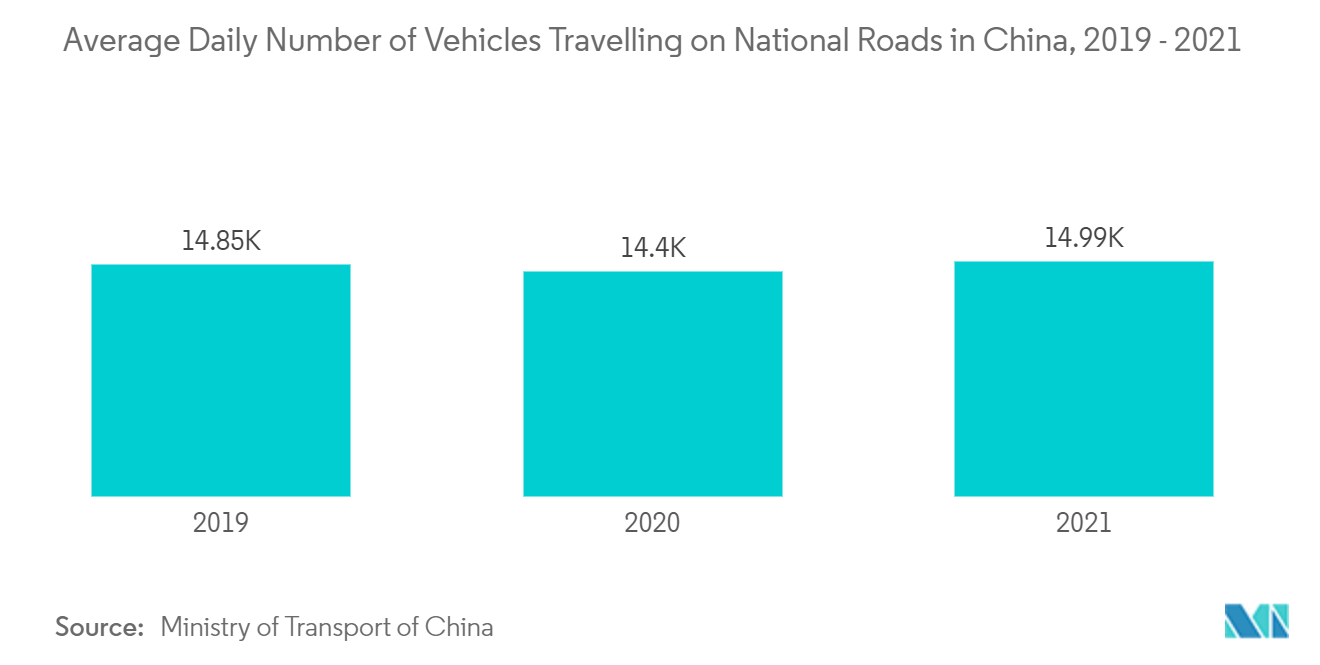Market Trends of High Speed Cameras Industry
This section covers the major market trends shaping the High Speed Cameras Market according to our research experts:
Intelligent Transportation Systems Initiative to Drive the Market
- Intelligent Transport System (ITS) aims to achieve traffic efficiency by minimizing traffic problems that enhance safety and comfort. It enriches users with prior information about traffic, local convenience, real-time running information, seat availability, etc., which reduces the travel time of commuters as well as enhances safety and comfort.
- Cameras, particularly high-performance machine vision cameras, are becoming more important in intelligent traffic systems. With features like real-time capability, broad sensor range, auto iris functionality, and day/night functionality, high-speed cameras help prevent potential accidents, keep traffic moving, and decrease the transportation sector's negative environmental impacts on society.
- The use of ITS to decrease traffic fatalities and improve traffic safety is a significant driver fueling the expansion of the intelligent transportation systems industry. The ongoing changes in the transport industry have highlighted the necessity for an optimized transportation infrastructure that might enhance road networks. Thus, the increasing need for road safety smart equipment will increase the demand for high-speed cameras over the coming years.
- Further, intelligent transportation is an essential component of any smart city. The Joint Transportation Management Center (JTMC), based in New York City, is the largest transportation center in North America. JTMC's Converged Security and Information Management (CSIM) installation covers hundreds of miles of the state arterial system and incorporates hundreds of cameras, vehicle detectors, variable message signs, and numerous highway advisory radios. Its mission is focused on around-the-clock coordination and communication to manage daily transportation incidents and reduce congestion on some of the busiest expressways in the world. This drives the market for high-speed cameras.
- Increasing investment by several governments to improve traffic management systems is expected to increase the demand for high-speed cameras over the coming years. For instance, in April 2022, to improve India's traffic situation, the Ministry of Electronics and Information Technology (MeitY) introduced numerous apps under the Intelligent Transportation System (ITS) as a part of the InTranSE- II initiative. According to the administration, onboard driver assistance and warning system (ODAWS) intends to enhance highway infrastructure as the number of cars and speeds on highways have grown, compounding safety problems.

Asia-Pacific to Register the Highest Growth
- Asia-Pacific region is expected to grow at a considerable pace throughout the forecast period. Rapidly increasing industrialization and the evolution of manufacturing hubs, particularly China and India, are expected to be significant drivers behind this growth. Investments from all over the world into the region's manufacturing sector are growing, creating an increased need for more efficient production line monitoring.
- Additionally, initiatives like the 'Make in India' program place India on the world map as a manufacturing hub and give global recognition to the Indian economy. According to India Brand Equity Foundation (IBEF), India is the world's third most demanding manufacturing location, with the potential to export commodities worth over USD 1 trillion by 2030. Such initiatives will drive the market for high-speed cameras in manufacturing sectors.
- High-speed cameras are increasingly being used in a wide range of industries, such as healthcare, automotive, food and beverage, and consumer electronics, and for tasks such as repairing, machinery diagnostics, analysis, and preventative maintenance. Industrial and automotive industries in India, China, and Japan are expected to use robots and computer vision capabilities more often, contributing to regional growth.
- High-speed cameras are also necessary for the proper use of the electronics and semiconductors sector, the food processing industry, and the development of top-tier research institutes and academia. Increasing investment in these industries will drive the demand for high-speed cameras over the forecast period. For instance, in September 2022, India expects a cumulative commitment of at least USD 25 billion due to its bonus program designed to encourage domestic semiconductor production.


